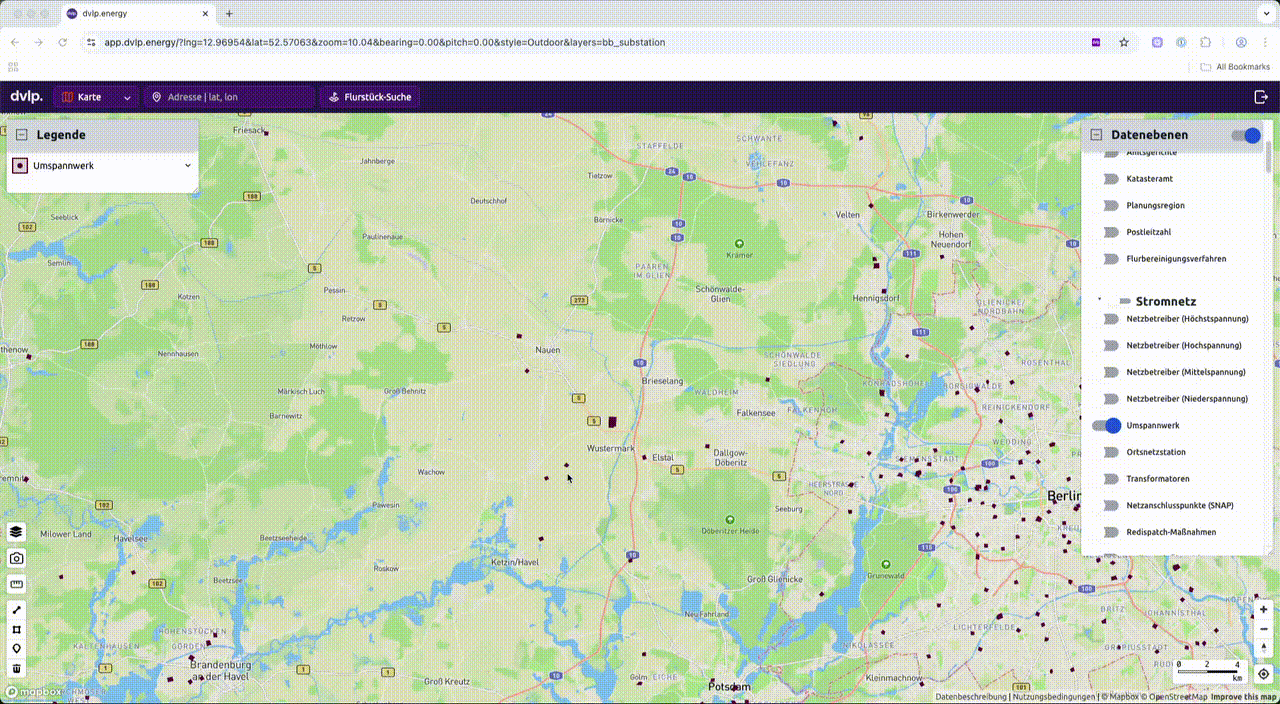“Looking for grid! 💕” – A step-by-step guide to analyzing grid connection capacity
Who wants to wait months for a network operator to respond regarding grid connection capacity? With the right data, you can gain a good understanding of the local grid situation yourself and prioritize projects for new power generators or consumers accordingly.
Who wants to wait months for a network operator to respond on a grid connection request? With the right data, you can gain a good understanding of the local grid situation yourself and prioritize projects for new power generators or consumers accordingly.
Here is a guide on how to do this:
⚡️Substation utilization: Compare connected generation vs. consumption capacity to determine whether the substation is generation- or load-dominated
🗺️ Grid area class: The same comparison at the municipal level to determine whether the municipality is generation- or load-dominated
--> For generation-dominated substations/municipalities, connecting a data center is a good option, for example, while for load-dominated ones, connecting new solar or wind farms is a good option—for balanced substations, BESS are suitable
🥤Congested lines: Identification of lines/areas that, according to the grid operator, are characterized by grid congestion
--> These should be avoided unless the congestion is resolved in a timely manner or is clearly due to generation or load
🚧 Grid expansion measures: Analysis of planned measures with regard to added capacity and schedule – the justification also includes information on the current grid situation
--> Grid areas with high expansion indicate current high utilization, but may be suitable for new generators/consumers with a similar schedule
🤹 Redispatch: Examination of these interventions, with which grid operators respond to acute generation-related grid bottlenecks (i.e., shutdown of wind and solar) – they often provide deeper insight into whether bottlenecks are caused by too much solar or wind power
--> Similar to bottleneck lines, these areas should be avoided by new producers using the same technology; depending on where exactly the bottlenecks are located, these regions may be well suited for new consumers.
✅ Fast grid connection check (SNAP): Review of grid connection points identified by the grid operators' daily tools
--> In regions where many grid connection points for large capacities are identified, a cost-efficient grid connection is likely
💕GridConnect: Search for potential partners for a grid connection in the region
--> It may be that developers/operators in the region have been allocated or promised grid capacity and can realize this with your help – if other developers in the region are also just searching, this confirms the hypothesis of low grid connection probability
➡️ All data and functions for this can be found in the dvlp.energy web GIS!
Our blog goes into even more detail about the specific procedure: https://www.dvlp.energy/en/blog/netzanschluss-gesucht---ein-leitfaden-zur-analyse-der-netzanschlusskapazitat
We would be happy to give you a personal demonstration at HUSUM WIND in Hall 1 at Stand 1C14 (Berlin-Brandenburg joint stand).
Let us know if you'll be there!


